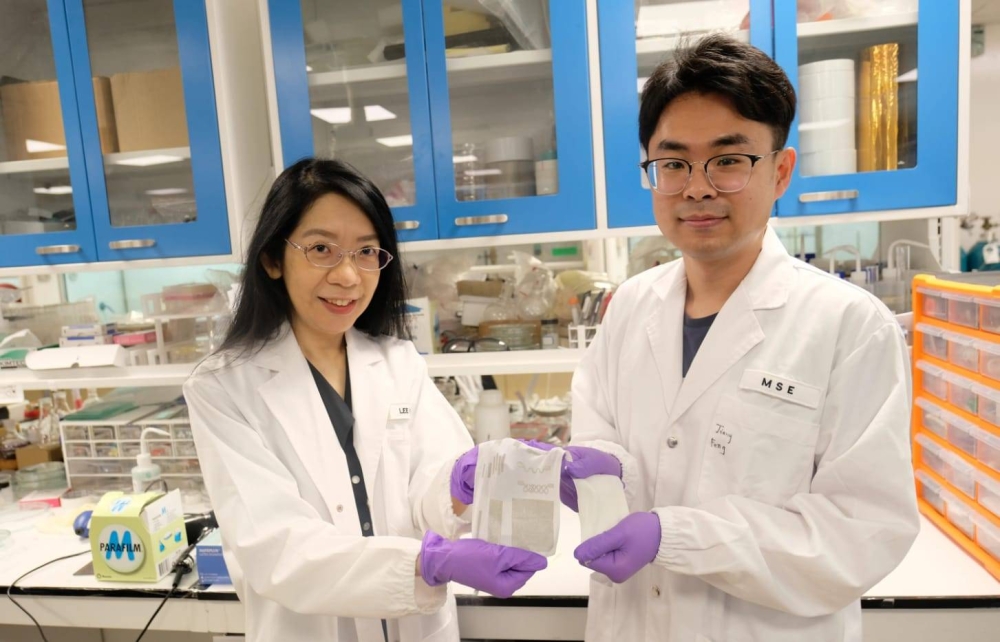SINGAPORE, June 3 — Scientists at Nanyang Technological University (NTU) have developed a new type of fabric that can convert the body's movement into electrical energy.
The stretchable and waterproof material could one day be integrated into clothes or wearable electronics to power devices on the go, the university said in a press release on Thursday (June 2).
The material consists of a polymer that, when pressed or squeezed, converts mechanical stress into electrical energy. It also produces electricity after coming into contact or being in friction with other materials or surfaces such as skin or rubber gloves.
In an experiment reported in the scientific journal Advanced Materials in April, the NTU scientists showed that tapping on a 3cm by 4cm piece of the fabric generated enough electrical energy to light up 100 LEDs, the university added.
The team also showed that the fabric could harness energy from a range of human movements when attached to the limbs or to the insoles of shoes.
Aside from the polymer, the fabric also consists of stretchable spandex as a base layer and is integrated with a rubber-like material. This makes it strong, flexible and waterproof.
The scientists found that washing, folding and crumpling the fabric did not cause any performance degradation, and the material could maintain a stable electrical output for up to five months.

Associate Provost Professor Lee Pooi See from NTU who led the study said: “There have been many attempts to develop fabric or garments that can harvest energy from movement, but a big challenge has been to develop something that does not degrade in function after being washed and, at the same time, retains excellent electrical output.
“Our prototype continues to function well after washing and crumpling. We think it could be woven into T-shirts or integrated into soles of shoes to collect energy from the body’s smallest movements, piping electricity to mobile devices.”
The prototype fabric builds on the NTU team’s work on harnessing energy generated in the environment.
The scientists recently developed a type of film that could potentially be mounted on roofs or walls to generate energy from wind or raindrops falling onto the film.
They are now looking at how the same fabric could be adapted to harvest different forms of energy. — TODAY






















